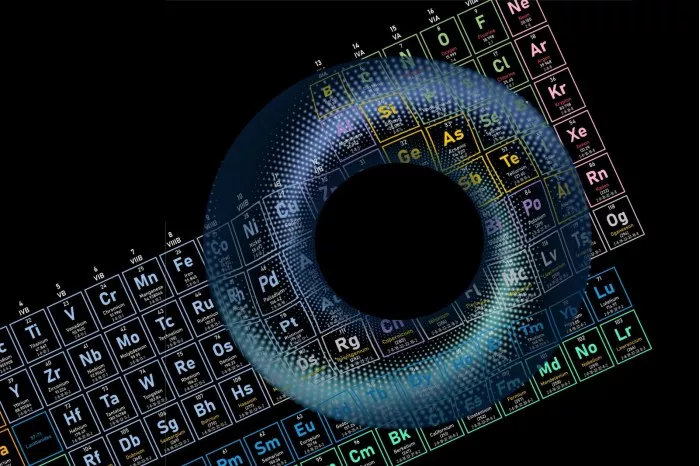How can our electronic products become more intelligent, faster and more flexible? One idea is to use topological materials to build them. Topology originates from a branch of mathematics that studies shapes that can be manipulated or deformed without losing some basic properties.

A doughnut is a common example. If it is made of rubber, a doughnut can be twisted and squeezed into a new shape, such as a coffee cup, while retaining a key feature - its central hole, which refers to the cup handle. In this case, the hole is a topological feature and has strong resistance to some deformation.
In recent years, scientists have applied the concept of topology to the discovery of materials with similar powerful electronic properties. In 2007, researchers predicted the first electronic topological insulator - in which the behavior of electrons is "topological protection".
Since then, scientists have been looking for more topological materials in order to build better and more flexible electronic devices. Until recently, only a few such materials have been found, so they are considered to be a rare material.
Now researchers at the Massachusetts Institute of Technology (MIT) and elsewhere have found that, in fact, topological materials are everywhere. You just need to know how to find them.
In a paper published in science on May 20, a team led by Nicolas regnault of Princeton University and Paris Higher Normal College reported that they used the power of multiple supercomputers to draw the electronic structures of more than 96000 natural and synthetic crystal materials. They use complex filters to determine whether topological features exist in each structure and which topological features.
Overall, they found that 90% of all known crystal structures contain at least one topological property, while more than 50% of all naturally occurring materials exhibit some topological behavior.
"We found a universality - topology is everywhere," said Benjamin wieder, a postdoctoral fellow in the MIT Department of physics and co-author of the study
The research team has incorporated the newly identified materials into a new, freely accessible topological material database - a periodic table similar to topology. With this new database, scientists can quickly search materials of interest, understand any topological properties they may have, and use them to build ultra-low power transistors, new magnetic memory storage and other devices with powerful electronic properties.
The co sponsors of this paper include Maia vergniory of the international physics center in Donostia, Luis elcoro of the University of Basque, Stuart parkin and Claudia felser of the Max Planck Institute, and Andrei bernevig of Princeton University.
Beyond intuition
The motivation for this new study is to speed up the traditional search for topological materials.
"The way to find raw materials is through chemical intuition. This method has many successful examples in the early days. But when we theoretically predict more kinds of topological phases, it seems that intuition doesn't take us far," wieder said.
Wieder and his colleagues turned to an efficient and systematic method to find signs of topology in all known crystal structures, also known as inorganic solid materials.
For their research, researchers began to focus on the inorganic crystal structure database (ICSD). ICSD is a repository into which researchers enter the atomic and chemical structures of crystalline materials they have studied. The database includes materials found in nature and those synthesized and manipulated in the laboratory. ICSD is currently the world's largest material database, containing more than 193000 kinds of crystals, and their structures have been mapped and characterized.
The research team downloaded the whole ICSD and obtained more than 96000 processable structures after some data cleaning to eliminate structures with damaged files or incomplete data. For each of these structures, they performed a series of calculations based on the basic knowledge of the relationship between chemical components to obtain the electronic structure diagram of the material - also known as the electron band structure.
The team used multiple supercomputers to perform effective and complex calculations for each organization. Then they used these computers for a second set of operations, this time to screen various known topological phases.
"We are looking for features in the electronic structure, and there should be some robust phenomena in this material," wieder said His previous work involved improving and expanding this screening technique, the so-called topological quantum chemistry.
The research team quickly found a large number of surprising materials from their high-throughput analysis. These materials are of natural topology. They do not need any experimental operation and materials that can be manipulated. In addition, they found a few materials that can find more than one topological state when they are exposed to certain conditions.
Wieder said that for experimenters who are studying this effect, the team's new database now reveals a new group of materials to explore.